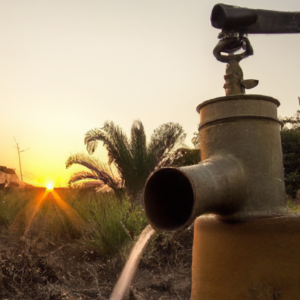Introduction: How Do Self-Sustaining Homes Differ From Regular Homes?
How do self-sustaining homes differ from regular homes? It’s a question that has crossed the minds of many who are looking to lead a more sustainable lifestyle. While the dream of residing in a self-sustaining home might seem like a utopian concept, it’s becoming an increasingly attainable reality for eco-conscious individuals.
Renewable Energy Sources
One of the most defining features of a self-sustaining home is its reliance on renewable energy sources. Unlike traditional homes, which are largely dependent on fossil fuels, these homes use solar, wind, or even geothermal energy to power not just lighting but also heating and cooling systems. This shift toward renewable resources represents a significant leap in sustainable living.
Innovative Waste Management
Waste management is another arena where self-sustaining homes stand head and shoulders above regular homes. Rather than contributing to our already overburdened landfills, these homes use cutting-edge systems to recycle and reuse waste. From composting toilets to greywater systems, waste is not a problem but rather a solution in a self-sustaining home.
Eco-Conscious Choice
As concerns about climate change and environmental degradation continue to grow, self-sustaining homes offer an eco-friendly alternative to traditional housing. They’re not just houses; they’re holistic ecosystems designed to minimize waste and maximize efficiency.
So, why settle for a regular home when a self-sustaining option offers not only a lighter ecological footprint but also an unparalleled level of independence and self-sufficiency? In this article, we will delve deeper into the unique characteristics, advantages, and emerging trends that make self-sustaining homes a compelling choice for the future.

Check Out Our Top Eco Friendly Product Picks On Amazon Here
Definition of Self-sustaining Homes
Definition and Key Features
Self-sustaining homes, also known as sustainable homes or eco-homes, are residences designed to minimize their dependence on external resources and maximize their ability to generate and manage their own resources. These homes integrate various features and technologies that allow them to produce their own energy, manage water resources efficiently, generate food, and effectively manage waste. The key features of self-sustaining homes include renewable energy systems, water management solutions, food production capabilities, waste management strategies, the use of natural and sustainable building materials, passive design principles, technology integration, and a focus on reducing environmental impact.
How Do Self-sustaining Homes Differ From Regular Homes: Energy Sources and Consumption
Renewable Energy Systems
One of the primary differences between self-sustaining homes and regular homes is the emphasis on renewable energy sources. Self-sustaining homes often incorporate solar panels, wind turbines, and other renewable energy systems to generate electricity. These systems allow homeowners to harness energy from the sun and wind, reducing or eliminating the need for grid electricity. By utilizing clean and renewable energy sources, self-sustaining homes significantly reduce greenhouse gas emissions and contribute to a more sustainable and environmentally friendly future.
Grid Connection
While self-sustaining homes aim to minimize dependence on the grid, they can still maintain a connection for times when renewable energy generation is insufficient. This allows homeowners to access grid electricity during periods of high energy demand or when the renewable energy systems are not generating enough power. Grid connection provides a backup option and ensures a consistent energy supply, especially during extreme weather conditions or unforeseen circumstances.
Energy Efficiency
Energy efficiency plays a crucial role in self-sustaining homes. These homes are designed with a focus on minimizing energy consumption by utilizing energy-efficient appliances, LED lighting, proper insulation, and smart technologies that optimize energy usage. By reducing energy waste and maximizing efficiency, self-sustaining homes can further lower their reliance on external energy sources and decrease overall energy costs.
How Do Self-sustaining Homes Differ From Regular Homes: Water Management
Rainwater Harvesting
Self-sustaining homes often incorporate rainwater harvesting systems to capture and store rainwater for various uses. Rainwater is collected from rooftops and directed into storage tanks or underground cisterns. This water can then be used for purposes such as watering gardens, flushing toilets, and washing clothes. Rainwater harvesting not only reduces reliance on strained municipal water supplies but also helps conserve water resources and reduces water bills.
Greywater Recycling
Another key feature of self-sustaining homes is the implementation of greywater recycling systems. Greywater refers to wastewater from sources other than toilets, such as sinks, showers, and laundry. This wastewater can be treated and filtered to remove contaminants and then reused for non-potable purposes, such as irrigation or toilet flushing. Greywater recycling helps reduce the strain on freshwater sources and limits the amount of wastewater discharged into the environment.
Water Conservation
Self-sustaining homes prioritize water conservation through various methods. These can include the installation of low-flow fixtures, such as aerated faucets and water-efficient toilets, as well as the promotion of conscious water usage habits among residents. Water conservation practices, such as capturing and reusing rainwater, recycling greywater, and minimizing water waste, contribute to sustainable water management and ensure a reliable water supply within the home.
How Do Self-sustaining Homes Differ From Regular Homes: Food Production
Vegetable Gardens
Self-sustaining homes often incorporate vegetable gardens, either outdoors or in controlled environments like greenhouses or vertical gardens. These gardens allow homeowners to grow their own organic fruits, vegetables, and herbs, providing a fresh and sustainable source of food. By cultivating edible plants at home, self-sustaining homeowners reduce their reliance on store-bought produce, minimize pesticide usage, and enjoy the benefits of nutritious, homegrown food.
Aquaponics Systems
Aquaponics systems are another popular feature of self-sustaining homes, enabling the production of both fish and vegetables in a symbiotic environment. In an aquaponics system, fish waste provides nutrients for the plants, while the plants filter and cleanse the water for the fish. This closed-loop system allows for the cultivation of both fish and plants without the need for soil, minimizing water usage and maximizing food production in a sustainable manner.
Chicken Coops
Many self-sustaining homes incorporate chicken coops as a means of sustainable food production. Backyard chickens provide a steady supply of fresh eggs and can also be a source of meat if desired. These coops are designed to provide comfortable living conditions for the chickens while also integrating waste management systems that turn chicken waste into compost, contributing to overall sustainability within the home.

How Do Self-sustaining Homes Differ From Regular Homes: Waste Management
Composting
Self-sustaining homes prioritize waste management through composting systems. Composting involves the decomposition of organic waste, such as food scraps, yard waste, and other biodegradable materials, into nutrient-rich compost. This compost can then be used as fertilizer for gardens and plant beds, closing the loop on organic waste and minimizing the need for chemical-based fertilizers. Composting reduces landfill waste and transforms organic matter into a valuable resource for sustainable food production and soil enrichment.
Recycling
In self-sustaining homes, recycling plays a significant role in waste management. Homeowners are encouraged to sort and recycle various materials, including plastics, glass, paper, and metals. By diverting recyclable materials from landfills, self-sustaining homes contribute to the conservation of resources and the reduction of environmental pollution. Recycling practices not only benefit the individual home but also contribute to the broader goal of creating a sustainable and circular economy.
Reducing Single-use Items
Self-sustaining homes also emphasize reducing the use of single-use items, such as disposable plastic bottles, bags, and utensils. Homeowners are encouraged to use reusable alternatives, such as refillable water bottles, cloth shopping bags, and durable utensils. By reducing the consumption of single-use items, self-sustaining homes minimize waste generation, conserve resources, and help combat the global issue of plastic pollution.
How Do Self-sustaining Homes Differ From Regular Homes: Building Materials and Design
Natural and Sustainable Materials
Self-sustaining homes prioritize the use of natural and sustainable building materials. These materials include, but are not limited to, sustainably harvested wood, bamboo, straw bales, hempcrete, rammed earth, and recycled materials. By choosing natural and sustainable materials, self-sustaining homes minimize the environmental impact of construction and promote healthier indoor environments for residents.
Passive Design Principles
Passive design principles are an integral part of self-sustaining homes. Passive design refers to the intentional design of a home’s layout, orientation, insulation, and ventilation to optimize energy efficiency and occupant comfort without relying on mechanical or electrical systems. By maximizing natural light, utilizing insulation, and incorporating efficient airflow systems, self-sustaining homes reduce the need for heating, cooling, and artificial lighting, thus reducing energy consumption and promoting a comfortable living environment.

How Do Self-sustaining Homes Differ From Regular Homes: Technology and Automation
Smart Home Integration
Self-sustaining homes often integrate smart home technologies that allow for convenient management of energy usage, water consumption, and other aspects of sustainable living. Smart thermostats, lighting systems, and appliances can be controlled remotely and programmed to optimize energy efficiency. Home automation systems enable homeowners to monitor and regulate energy and water usage, providing real-time data to make informed decisions about resource management.
Energy Monitoring Systems
To track and manage energy consumption, self-sustaining homes may utilize energy monitoring systems. These systems provide homeowners with detailed information about their energy usage, allowing them to identify areas of inefficiency and make adjustments accordingly. By promoting awareness and understanding of energy consumption patterns, energy monitoring systems empower self-sustaining homeowners to take proactive measures to reduce energy waste and improve overall resource management.
How Do Self-sustaining Homes Differ From Regular Homes: Cost and Affordability
Upfront Investment
Self-sustaining homes often require an upfront investment to implement the necessary technologies, systems, and design features. While the initial costs may be higher compared to conventional homes, self-sustaining homes offer long-term financial benefits and a return on investment through reduced energy bills, lower water expenses, and potential savings from food production. Additionally, the availability of incentives, grants, and tax credits for sustainable home construction can help offset the initial investment and make self-sustaining homes more affordable.
Long-term Savings
One of the significant advantages of self-sustaining homes is the potential for long-term savings. By relying on renewable energy sources, efficient water management systems, and food production capabilities, self-sustaining homeowners can significantly reduce their monthly expenses on energy, water, and groceries. The savings gained over time can offset the initial investment and contribute to a financially sustainable and resilient lifestyle.

How Do Self-sustaining Homes Differ From Regular Homes: Environmental Impact
Reduced Carbon Footprint
Self-sustaining homes have a significantly lower carbon footprint compared to regular homes. By prioritizing renewable energy sources, energy efficiency, water conservation, waste management, and sustainable building materials, these homes minimize greenhouse gas emissions associated with energy production, water treatment, and waste disposal. Self-sustaining homes contribute to mitigating climate change and creating a more sustainable future for generations to come.
Conservation of Resources
Self-sustaining homes actively contribute to the conservation of natural resources. By utilizing renewable energy sources instead of fossil fuels, these homes reduce the demand for finite resources and decrease extraction and production-related environmental damage. Water management systems and practices in self-sustaining homes help conserve freshwater resources, minimize water pollution, and support the overall sustainability of local ecosystems. By promoting the use of sustainable building materials and reducing waste generation, self-sustaining homes minimize resource depletion and promote a circular economy.
How Do Self-sustaining Homes Differ From Regular Homes: Challenges and Limitations
Availability of Resources
One of the challenges of self-sustaining homes is the availability and affordability of resources and technologies required to achieve self-sustainability. While renewable energy systems, water management solutions, and sustainable building materials have become more accessible over time, their widespread adoption can still be limited by geographic, economic, and regulatory factors. However, as sustainable technologies continue to evolve and gain popularity, the availability and affordability of resources are expected to improve.
Complexity of Maintenance
Self-sustaining homes require regular maintenance and monitoring to ensure the efficient functioning of renewable energy systems, water management solutions, and food production capabilities. Homeowners need to be knowledgeable about system operation, troubleshooting, and routine care to maintain optimal performance. While the advancements in technology and automation have made management more accessible, ongoing maintenance and occasional repairs can still pose challenges. However, with proper education and support, homeowners can overcome these limitations and reap the long-term benefits of self-sustainability.
How Do Self-sustaining Homes Differ From Regular Homes: In A Nutshell
Understanding the intricacies of self-sustaining homes as compared to regular homes is like comparing an electric car to a gasoline-powered one; both serve the same basic function but do so in radically different ways, with varying impacts on our lives and the environment. Self-sustaining homes are not just a trend or an architectural fad; they represent a fundamental shift in how we interact with our living spaces, utilizing them not just for comfort but also as active participants in sustainability.
Energy Independence
One of the most defining characteristics that set self-sustaining homes apart from their regular counterparts is energy independence. While traditional homes rely on external sources for electricity and heating, often generated through fossil fuels, self-sustaining homes aim to produce their own clean energy. This transition is not just eco-friendly but also practical, providing a buffer against power outages and rising energy costs.
Waste Management
Another crucial difference lies in waste management. Traditional homes contribute to the landfill problem, whereas self-sustaining homes attempt to recycle and reuse waste, from water to organic matter. Technologies like composting toilets and greywater systems transform waste into an asset, closing the loop in a way that benefits both the household and the environment.
Sustainable Building Materials
Self-sustaining homes often make use of sustainable building materials, from reclaimed wood to recycled metal, which further reduces their ecological footprint. In contrast, regular homes often use materials that are resource-intensive to produce and transport, contributing to greater environmental degradation.
Community Impact
While it might not be an architectural feature, the community impact of self-sustaining homes cannot be overlooked. These homes often serve as models for sustainable living, inspiring neighbors and communities to adopt similar practices. Traditional homes, unless retrofitted, generally don’t offer this advantage.
In sum, self-sustaining homes are a monumental step forward in residential design, putting into practice the principles of permaculture design, sustainability, and conscious living. These homes don’t just provide shelter; they nurture, conserve, and give back, redefining our relationship with our immediate environment. With their focus on energy independence, innovative waste management, use of sustainable materials, and positive community impact, self-sustaining homes are not just different from regular homes; they are arguably better, paving the way for a more sustainable and resilient future for all.




